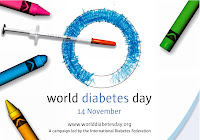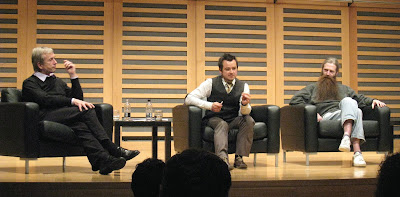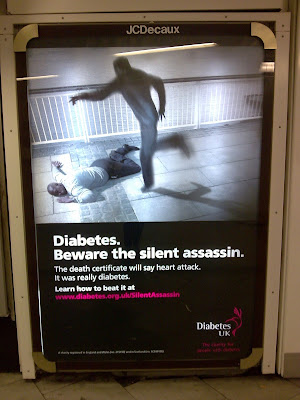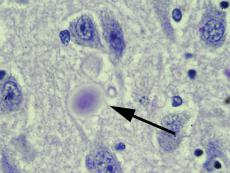To celebrate the launch of the book
Medical London: City of diseases, city of cures, the
Wellcome Collection is hosting a
selection of events in the city. Written by Richard Barnett and Mike Jay, Medical London offers "a unique ... view of the roles played by diseases, treatments and cures in London's sprawling story". Yesterday I took part one of the Wellcome events - a walk around west London titled
From homeopaths to psychopaths.
We started out in Sloane Square, where leader Max Décharné, author of
King's Road, gave us a bit of background on the area. Throughout the 16th and 17th century, the Chelsea region served as a rural outpost of London, the clean air and clean water of the village a welcome reprieve for the visitors looking to recuperate from the filthy mêlée of the east end.

First stop was the statue of
Hans Sloane, which stands outside of the Duke of York's Headquarters (
Photo: Matt from London on Flickr). Sloane, born in 1660, was physician to Queen Anne, George I and George II and was the first medical practitioner to receive a peerage, given the title Baron in 1716. In clinical practice, Sloane promoted innovations such as inoculation against smallpox and the use of quinine (a treatment for malaria). He was also a president of the
Royal College of Physicians and succeeded Sir Isaac Newton as President of the
Royal Society.
As well as being a proficient doctor, Sloane was an avid collector of pretty much anything and everything, and on his death his vast collection of natural history specimens and antiquities was sold to the nation at a knock-down price and housed in the newly created British Library, and later at the Natural History Museum.
We next passed through
Chelsea Walk, which was originally built by William III and intended as a wide boulevard linking the newly-built
Royal Chelsea Hospital with Kensington Palace, but actually only extends from the hospital to King's Road.

The
Royal Chelsea Hospital itself was commissioned by Charles II for the "succour and relief of veterans broken by age and war" (
Photo: stevecadman on Flickr). Until the 17th century injured or elderly soldiers were not provided for in any way by the state. Many were kept on regimental rolls and still took part in duties so that they could continue to receive payment as there were no pension provisions. Charles II recognized that the state owed a debt to these soldiers, marking a shift from the tactic of previous kings who often left the poor and infirm to fend from themselves. The hospital was built by
Sir Christopher Wren and completed in 1692, with the first 479 in-pensioners in residence by the end of the year. The hospital is still a home to elderly or injured British soldiers, and is also the site of the annual
Chelsea Flower Show.
On the way to the hospital we passed
Bram Stoker's house on St Leonard's Terrace, who, despite writing rather morbid literature, has an interesting health connection. In 1882 Stoker was
awarded a Royal Humane Society Bronze Medal for attempting to save the life of a man who had jumped into the River Thames.
At this point I sadly had to abandon the walk as I had been totally soaked through by the torrential rain. I was particularly disappointed to miss the trip to
Chelsea Physic Garden, not least because for many years I thought it was called Chelsea
Psychic Garden and was hoping for some horticultural glimpse into my future (incidentally, the word ‘physic’ refers to the science of healing, not the science of matter and forces. So much opportunity for confusion). The garden was founded in 1673 as a site to train apothecary apprentices in the art of identifying plants and still hosts the
Garden of World Medicine, a special collection of plants used for medicinal purposes by different cultures around the world.
 This blog has moved to my new personal website helenjaques.co.uk.
This blog has moved to my new personal website helenjaques.co.uk.
























